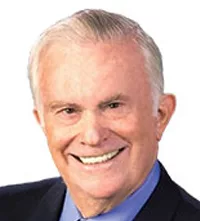In a unique prediction for a bank chairman, JPMorgan Chase CEO Jamie Dimon notes that strong consumer savings and expanded vaccine distribution, combined with President Joe Biden’s 2.3 trillion-dollar infrastructure plan, will secure sustained economic growth for years to come. This is decidedly improved over a year ago, in which he warned about a future downtown of 35 percent.
Dimon indicated that his positive reversal was based on the U.S. government’s “rapid and deep” intervention over the last year, especially the Federal Reserve Board. It caused a dramatic switch in his opinion.
In his latest pronouncements, Dimon called for laying the foundation of long-term economic growth with a year-long, nationwide “Marshall plan.” In this, he referred to the U.S. initiative to help Western Europe rebuild after World War II, which also was a way of protecting those nations from being overrun.
Dimon also emphasized that taxes would need to go up substantially; this indicated his belief of further increased debt, now bordering on $30 trillion.
Dimon, who has run one of the world’s most successful banks, is joining other banks in benefitting from this anticipated super-boom. The $3.4 trillion bank posted a record quarterly profit for the final three months of 2020. Analysts expect a profit of about $9.30 billion in the coming months.
JPMorgan Chase and other big banks are expected to free up tens of billions of dollars in reserves that still haven’t materialized about 15 months into the COVID-19 pandemic.
Dimon admits that potential obstacles could derail the boom faster than expected: inflation could force the Federal Reserve to raise short-term interest rates, reversing current business investments, and the bank’s printing of more monetary expansion.
In his 65-page annual shareholder letter, Dimon was very specific in the various up-and-downs waiting to happen. But all-in-all, he foresees a three-year upward bulge, the likes of which will delight the nation as a whole.
The Nation’s Banks and Loan Scarcity
While American consumers as a whole seem to be flush with cash in this post-pandemic environment, U.S. banks are finding a major drop in loans.
Banks need loan growth to offset the effect of low-interest rates, as consumer demand has dried up during the last couple of years. Although spending is starting to pick up, even the largest banks are sitting with unprecedented cash volume, with no major demand for it as yet.
JPMorgan Chase said travel and entertainment spending is up 50 percent in March versus February, while Citigroup noted consumer activity in hotels and restaurant were on a definite uptick. Even so, most banks are not reporting anything more than a tepid uptick in this current environment.
The impressive size in banks’ reserves indicates how much consumer cash had grown during the lengthy rewind when there were few places to spend it. And this is further being added to by the present U.S. administration, pushing new consumer stimulus greater than ever.
Bank of America sees only 30 percent of incoming stimulus money being spent, with the rest just sitting in individual accounts. U.S. Bancorp said that average car loans for the first quarter of 2021 fell as government stimulus payments were used to pay down debt. Even mortgages indicate less need — a reverse of previous experience when the expanding housing industry seems to call for more cash.
Net interest income for Bank of America could increase $1 billion by the fourth quarter of 2021, from around $10 billion in each of the previous two quarters. However, JPMorgan Chase anticipates consumer loan growth to expand in the second half of the year.
While President Joe Biden’s huge spending programs are still being argued in Congress, it’s expected that a huge wave of consumer cash will be made available in the second half of 2021. This will leave banks, big or small, with a growing flush of cash but a continuing dry-up of loans.
Jerome Powell, Man of the Decade
Although Federal Reserve Chairman Jerome Powell was named to that position by President Donald Trump in February 2018 — after serving on the board since 2012 — I had the privilege of recommending him as 2020's Man of the Year. Although not granted that privilege, which is strictly ceremonial, Powell is proving to be the person that directed America’s national bank into the direction of saving the U.S. economy by preventing a stock market “crash” of indescribable proportions.
Powell performed this magnificent feat by turning the Federal Reserve into the instrument that provided the liquidity to reverse a major crash in the making on Feb. 20, 2020. That’s when the COVID-19 pandemic broke the market, with the economy ready to follow.
While the Federal Reserve had previously acted as a restraint of growth to avoid inflation, Powell threw much negativism to the winds and reactivated America’s central bank to reverse what could clearly have become another 1929 economic calamity.
With a reversal of the Federal Reserve’s previous position of restraining fast growth, Chairman Powell rightfully felt that the tens of thousands of American workers who were losing their jobs were a responsibility of the Fed. This was a position never before used by America’s central bank.
Having accomplished this reversal, Powell continued to print money. It not only stopped the equity market’s crush but has taken the backbone of America’s economy to new heights. From a historical perspective, this courageous action turned the economy to the upside in the latter 2019/20. This built the base of even greater comebacks in the future, barring President Biden’s negative actions.
While the dark clouds of Biden’s border openings and hamstringing oil, natural gas, coal, etc., may deter what could be, Powell’s courageous and sensible Federal Reserve action will still make him a major figure in America’s history.





